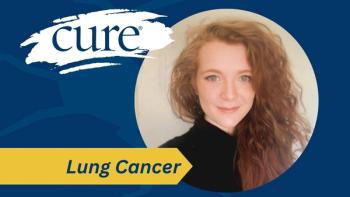
- Fall 2013
- Volume 12
- Issue 3
Getting Personal: Cancer Genomics
Next-generation sequencing takes treatment to a whole new level.
CURE’s assistant editor, Lindsay Ray, attended a presentation on biomarkers offered by Kristine Deano Abueg, a clinical research nurse at Kaiser Permanente in Roseville, Calif., and asked these follow-up questions via email.
LINDSAY RAY: How would you distinguish between genetics and genomics?
KRISTINE DEANO ABUEG: They certainly sound similar and are closely related, but they look at different things. Genetics looks at individual genes in isolation. Genomics looks at how all the groups of various genes in an individual interact with each other. So much of how the gene functions depends on its interaction with other genes, the cellular environment and other proteins. It’s similar to looking at individual words (genes) versus looking at whole paragraphs or books (genomes). The meaning and impact of one gene (or one word) is tremendously affected by the other genes (or words) that surround it.
When we talk about disease, especially cancer, what we see is the final product of the interaction of many, many genes. Genomics helps us to evaluate the entire “interactive soup” and not just one ingredient (one gene).
LR: Briefly explain how genetic errors can occur.
KDA: Let’s go back to our word analogy. For the most part, you can only spell a word one way. Change any of the letters around, omit a letter, duplicate a letter, and you automatically either change the meaning of the word or get a nonsense word. The same is true for genetics. Each gene is made of a particular sequence of proteins. Change the sequence, insert extra proteins or delete proteins, then the gene changes—and so does its function. These changes most commonly occur while the DNA is being copied in anticipation of cell growth. So, when we need new cells throughout our life, the original DNA strand gets “copied.” These changes are commonly referred to as gene mutations. It’s important to point out that genetic errors are occurring constantly. But either the mutation occurs in a DNA stretch that doesn’t have too much impact, or it gets corrected by other genes. However, if the mutation occurs in a stretch that controls cell proliferation, DNA repair, apoptotic signaling, angiogenesis, or metastasis—then it can significantly increase cancer risk, prognosis and treatment options. Furthermore, if an individual has several errors, the risk is compounded greatly.
Genomics helps us to evaluate the entire “interactive soup” and not just one ingredient (one gene).
LR: What are the different types of information that genetics/genomics can provide?
KDA: Genetic mutations can impact the spectrum of cancer care, including detection, treatment choice, targeted prevention and prognosis. In a broad sense, genetics/genomics can identify mutations that indicate a known risk for a certain cancer; it can identify sensitivity (or resistance) to certain medications; it can identify likelihood of side effects from certain drugs. That information has been around for a while with genetics: We can look at individual genes (small lengths of DNA) and match it to a known list of “cancer-related mutations.” Genomics—looking at the entire panel of DNA—will help to really clarify the importance of those mutations for an individual. Again, it’s critical to look at the interaction of many genes to predict the final product.
LR: What are the immediate implications in the clinical setting of next-generation sequencing (NGS)? What should patients take into consideration if they’re considering having their genome sequenced?
KDA: By and large, NGS doesn’t yet have a foothold in most hospitals, although more and more medical centers are beginning to incorporate it. That said, it is available to individuals from private companies. If consumers want to get their genome sequenced, they only need look for a company, get the test done (a simple blood test) or request submission of their tumor (if applicable) and pay the fee. For clinicians and patients, the major questions include: How reliable is the data provided; what, if any, actions can be taken as a result of that data (in other words, how does it change care?) and how to handle incidental findings.
Patients should be aware of the Genetic Information Nondiscrimination Act (GINA), which provides federal protection from health insurance and employment discrimination. Nonetheless, we as a society need to be prepared for the “data tsunami.”
LR: How do you think next-generation sequencing will affect clinical practice in the future?
KDA: The data generated from NGS has the potential to provide a much more comprehensive, complete diagnosis. Rather than looking for one mutation at a time, or a panel of specific mutations, clinicians will be faced with whole genomes to interpret. Rather than classifying cancer per disease site and histology (cell type) as we do now, in the near future diagnosis will incorporate data that points us to more effective treatments, points us away from ineffective treatments and predicts overall survivability. In short, it’s the next step in personalized medicine. There’s an old adage clinicians try to adhere to: The right treatment at the right dose for the right patient at the right time. Genomics helps to fulfill that commitment.
Articles in this issue
over 12 years ago
Lung Cancer Video Touches on Emotions and Supportover 12 years ago
Triple-Negative Breast Cancer: Divide and Conquerover 12 years ago
Future Frontier: Fighting Cancer at the Genetic Levelover 12 years ago
Second Chance: When Grandparents Become the Caregiversover 12 years ago
Supreme Court Votes Against Human Gene Patentsover 12 years ago
Documentary About Cancer Plannedover 12 years ago
Critical Mass Annual Conferenceover 12 years ago
Superfoods Study Keeps More Men on Active Surveillanceover 12 years ago
HPV Infections Plummet with Vaccine



